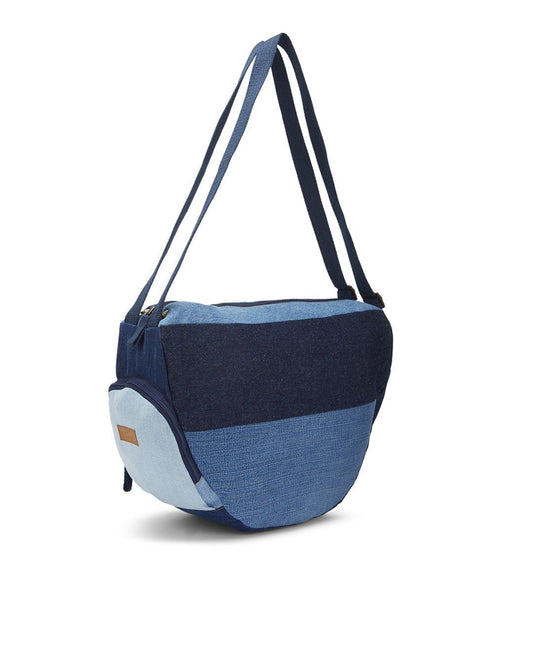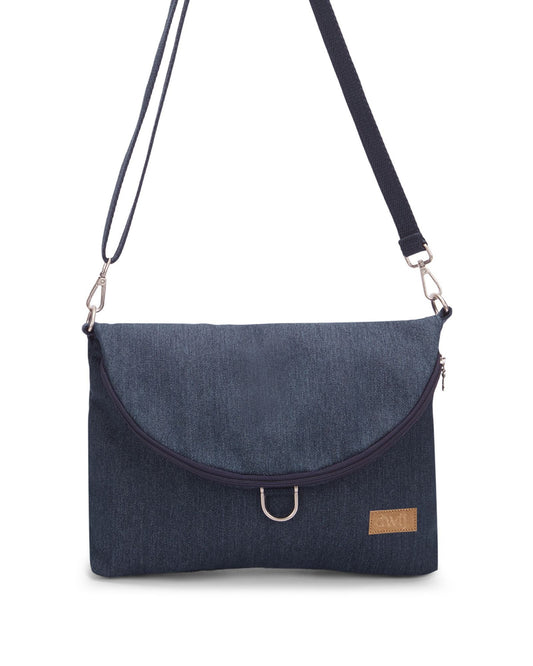We live in a world where hundreds of billions of dollars are spent to make clothes each year. With over 300 million people working per year, according to MDPI's latest research. Manier today thinks that wearing upcycled clothes is a trend; wearing recycled clothes makes them feel like they are part of a community. But in reality, are they aware of the upcycling community? Do they know how much effort it takes to make a piece of denim and later recycle it? Are they aware of the fact that more than 1000 liters of water is used to make one pair of jeans?
Don’t you think doing something just because it’s trending without understanding its base and reality is stupidity? There’s no harm in following the trend and wearing whatever you like, but on the other hand, don’t you think you should understand the value of upcycling clothes that you’re carrying on your body? Upcycling clothes is certainly more than a trend; it’s a movement that can lead us to live a healthy, sustainable life. Let's embark on a journey of discovery and explore the incredible impact of upcycling on our planet.

Upcycling clothes environmental challenges: Waste and consumption
Before we talk about how and why upcycling is beneficial, it is crucial to be knowledgeable about the major environmental challenges that we face. Our throwaway culture, driven by fast fashion, disposable products, and planned obsolescence, has led to overflowing landfills, resource depletion, and environmental degradation.
This unsustainable cycle of production, consumption, and disposal has taken a toll on our planet, contributing to issues such as pollution, habitat destruction, and climate change. It's a wake-up call that has inspired a growing movement towards sustainability and, in particular, upcycling clothes.
Upcycling Unveiled: Powerful and creative Response to Waste
What exactly is upcycling? At its core, upcycling is the art of transforming discarded or unused items into new products of higher quality or value. It's not just about reusing materials; it's about reimagining their potential and giving them a second life.
For example, look at our backpacks; these are completely upcycled. We have used old denim jeans that were completely going to waste and gave the cloth a new life in the form of a bag. Imagine carrying or wearing something that your parents or loved ones once wore.
Do you think any expensive piece of cloth would be more valuable than that? Absolutely not! So, what’s the point of wasting and harming the environment when you can add value to your life and save the environment at the same time?
Now, let’s dive into some of the environmental benefits of upcycling:
1. Reducing Resource Demand: One of the most significant contributions of upcycling is its ability to reduce the demand for new resources. When we upcycle, we're not extracting more raw materials from the Earth, which means less mining, deforestation, and water consumption.
2. Minimizing Waste: Upcycling directly addresses the issue of waste. Instead of sending items to landfills, where they can take decades or even centuries to decompose, upcycling gives these items new purpose and prevents them from becoming environmental liabilities.
3. Energy and Emissions Savings: The production of new goods consumes energy and generates greenhouse gas emissions. Upcycling typically requires less energy compared to manufacturing new products, which helps lower carbon emissions and combat climate change.
4. Encouraging Responsible Consumption: Upcycling promotes a shift away from the culture of disposability. When consumers value and invest in upcycled products, they're more likely to make thoughtful, long-lasting choices, reducing overall consumption.
Check out: Are Upcycled Products Value For Money?
Upcycling Clothes at Home: The Impact it can make
Brands like ours work solely on upcycling old clothes and giving them a new soul. We believe that you don’t need fashion to express the value of your outfit. Upcycling can begin right at home, and it's an accessible and creative way for individuals to contribute to environmental improvement.
1. Everyday Upcycling: Whether it's turning old T-shirts into reusable shopping bags, repurposing glass jars as storage containers, or crafting unique home decor from discarded materials, upcycling can become a part of your daily life.
2. Fostering Creativity: Upcycling isn't just about reducing waste; it's an opportunity to unleash your creativity. It challenges you to think outside the box and find innovative ways to give items new life.
3. Teaching Sustainability: For families, upcycling can be an educational experience. It teaches children about the value of resources, the importance of reducing waste, and the power of individual actions in protecting the environment.
4. Joining the Upcycling Movement: Sharing your upcycling projects and ideas with friends and on social media can inspire others to join the upcycling movement. It's a ripple effect that starts with small actions and leads to a more sustainable future.
So, now answer a simple question, does upcycling invest in saving the environment? If your answer is yes, then you’ve treated this blog right and understood the essence of upcycling clothes. It's a practice that reduces resource demand, minimizes waste, saves energy, and encourages responsible consumption. Upcycling is a creative and accessible way for individuals and brands alike to make a meaningful difference in the fight against environmental degradation.
As we continue to grapple with global environmental challenges, upcycling stands as a shining example of how innovation, resourcefulness, and a commitment to sustainability can lead to positive change. It's an investment in a greener, cleaner, and more vibrant future, one upcycled creation at a time. So, let's embrace the power of upcycling and be part of the solution to protect the planet we call home.






